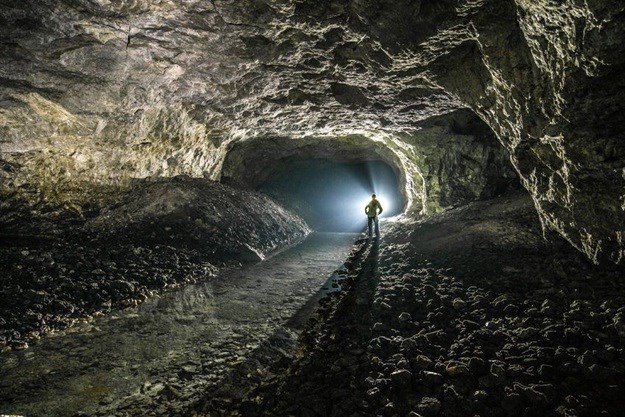Twenty-two former underground miners are claiming more than R80 million in damages from Sasol Coal after they contracted serious lung and other diseases as a result of years of inhaling coal dust while working in underground coal mines.
They are arguing that Sasol Coal was negligent in failing to take adequate care to maintain healthy working conditions underground, in violation of several health and safety laws. Even if it was not negligent, the miners say the company bears the liability of their ill-health and loss of income for being unable to work.
The miners are represented by Richard Spoor, the attorney who last year reached a R5-billion settlement with seven gold mining companies for miners afflicted with silicosis contracted after years of breathing silica dust in underground mines.
In papers before the Johannesburg High Court, 12 of the miners say they were dismissed from employment because they contracted lung-related illnesses which made them unable to continue working. They are claiming for the loss of income, aggravated by their inability to find alternative work due to age, illness, low educational levels and lack of qualifications. The largest individual claim is R10.2 million, and the smallest is just under R1 million.
“The plaintiffs have suffered permanent physical impairment. Such impairment includes shortness of breath, generalised weakness, chronic chest discomfort, tiredness and disturbed sleep,” states the miners’ particulars of claim before the court.
One of the principle hazards to which they were exposed was noxious coal dust that cause lung diseases such as Coal Workers’ Pneumoconiosis (CWP) and Chronic Pulmonary Disease (COPD). These diseases can lead to respiratory symptoms such as a persistent cough and shortness of breath, resulting in a reduced ability to perform physical tasks. These can eventually develop into Progressive Massive Fibrosis (PMF), which reduces life expectancy. If coal miners with CWP or COPD are further exposed to coal dust, the severity of the disease is likely to increase.
The miners argue that Sasol Coal should have known of these health hazards, and through dust sampling and measurement should have been aware of the quantities of coal dust to which miners were exposed. Routine medical surveillance, if undertaken, would have established whether miners were at risk from the levels of dust in the underground mines.
Sasol denies liability
In its reply, Sasol argues that the matter has prescribed – meaning it is now too late to bring before the court. The Prescription Act requires such matters to be brought within three years of the alleged offence. Summons was served on the company in April 2015, more than three years after most of the miners had left Sasol’s employ.
Sasol’s court papers show several of the miners were dismissed for illegal strike action, and some had received medical compensation once their conditions had been diagnosed. One of the miners has since passed away. In other cases, workers’ medical conditions were deemed not severe enough for compensation. Some of the miners had previously worked at other mines, which may have aggravated their medical conditions. In other cases, Sasol denies the miners suffered from any lung disease, and no occupational diseases were diagnosed, so no benefits were paid out on their dismissal.
Sasol also questions some of the medical assumptions on which the miners base their claim, adding that CWP seldom causes significant disability. It also denies that COPD is developed by everyone who breathes coal dust.
The company argues that it provided proper mine ventilation to reduce dust particles to acceptable levels, and all workers were given adequate protective gear. To reduce the risk to miners’ health, remote-controlled mine machinery was employed, allowing operators to control the machines from a safe distance. It further argues that the miners have not been able to identify any act or omission that caused their injuries, and that the company took reasonable measures to address and reduce the risk of harmful exposure to dust on its mines.
Sasol also argues that in the event of dust hazards, the miners themselves would have been negligent in not noticing, avoiding and reporting the hazard (to which the miners reply that the harmful dust is invisible to the eye, and therefore almost impossible to detect). Should the court find Sasol Coal guilty of negligence, the corresponding negligence of the miners should reduce the amount of damages to be paid, says Sasol.
The Mine Health and Safety Act (MHSA) sets out the health and safety obligations on mine operators, who are expected to provide a work environment that is safe and does not pose a risk to workers’ health. Mines are also required to periodically measure the health dangers and investigate every serious illness so that the causes can be isolated and mitigated. It is also claimed that the company failed to properly ventilate the mines.
The miners argue that Sasol violated mining legislation by failing to ensure its mines were safe and healthy.
Expert medical reports show several of the miners on pain medication for lung-related complaints and other diseases. The reports suggest dust masks were available only some of the time while working underground.
The Sasol mines named in the court papers are Bosjesspruit, Brandspruit, Middelbult, Syferfontein, Twistdraai and Sigma.
The case is about to enter the pre-trial stage where the opposing parties will narrow down the areas of dispute. If settlement is not reached before then, the matter will likely go on trial in 2020.
This article was originally published on GroundUp.



























![Today, Halo and Demographica announce a new specialist agency, Second Rodeo]], headed up by Mike Stopforth (left). Dean Oelschig, managing partner and founder of Halo (right) says they will work as a group but ultimately, each agency will be an individual specialist](https://biz-file.com/c/2505/772543-64x64.jpg?2)





